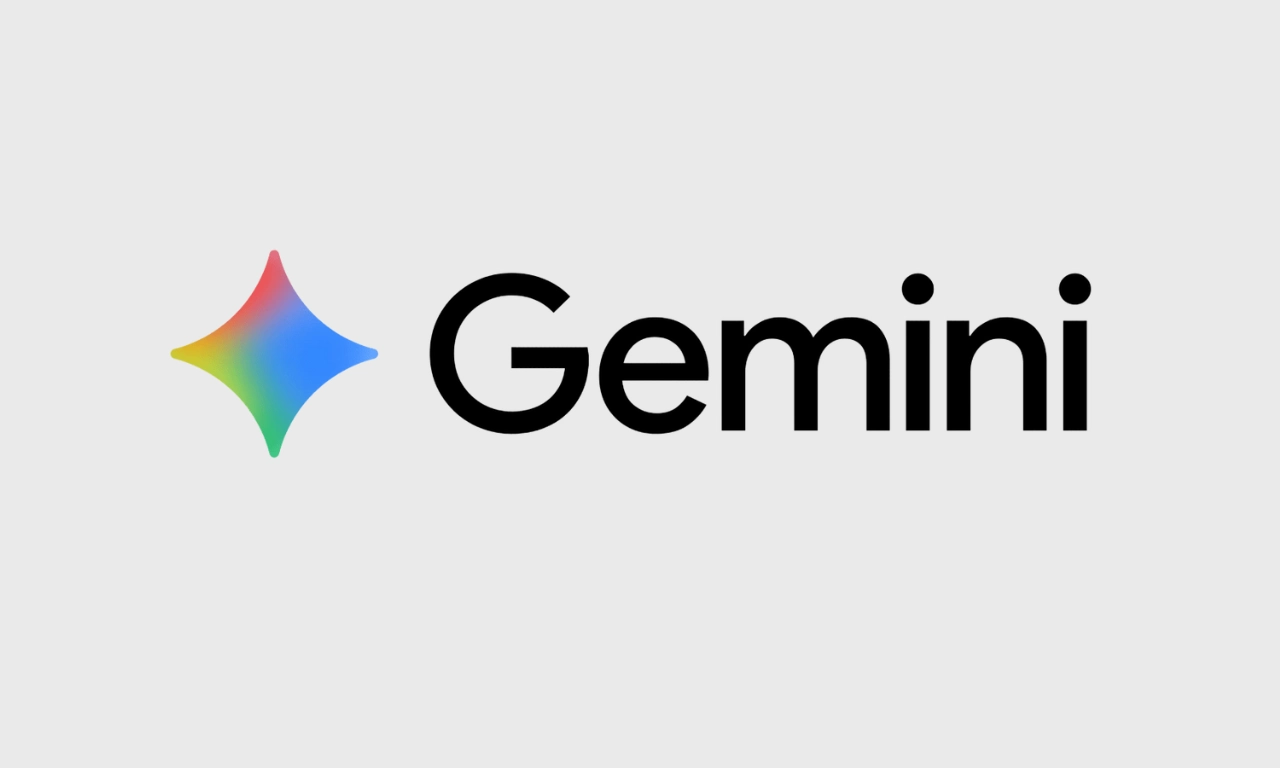Gemini 3 Antigravity AI Guide: Comparison, Pricing & Review

Google released Gemini 3 on November 18, 2025 as its latest flagship AI model. According to CEO Sundar Pichai, Gemini 3 is “the best model in the world for multimodal understanding” – a leap forward in Google’s Gemini series. Built by Google DeepMind, this model combines text, images, video, audio and code understanding to help you “bring any idea to life”.
It features state-of-the-art reasoning, a 1-million-token context window, and powerful new coding and planning abilities.
Key Capabilities of Gemini 3
• Advanced reasoning: Gemini 3 Pro achieves PhD-level results on tough tests. It scored 37.5% on the Humanity’s Last Exam and 91.9% on the GPQA Diamond test. In mathematics it reached 23.4% on the MathArena Apex benchmark.
• Multimodal understanding: Unlike text-only models, Gemini 3 natively handles text, images, video, audio, and code together. It scored 81% on MMMU-Pro (image+text) and 87.6% on Video-MMMU, far ahead of earlier models. With its large context window (up to 1 million tokens), it can consider entire books or long videos in one go.
• Coding and AI agents: Google calls Gemini 3 “our most powerful vibe-coding model yet”. It leads coding benchmarks (1487 Elo on WebDev Arena) and supports agentic coding: it can autonomously write and debug code. For example, it can generate complete web apps or even code 3D games with minimal prompts. (Developers can try this via Google AI Studio, Vertex AI, and the new Google Antigravity platform.)
• Agentic Development & Gemini CLI: Building on prior Gemini 2.5 Pro feedback, Gemini 3 Pro is optimized for agentic workflows. It can propose and execute shell commands (via a new client-side bash tool), and supports structured “tools” integration (e.g. querying Google Search or web URLs) to fetch external data. This lets it autonomously navigate a developer’s file system, call APIs, or compile and run code. Paired with the open-source Gemini CLI, developers can integrate the model into existing scripts and pipelines, automating multi-step tasks under their control.
• Planning and decision-making: Gemini 3 is also great at multi-step planning. In one test it managed a simulated business for a full year, topping the leaderboard in long-horizon planning tasks. This means it can handle complex workflows like booking trips or managing projects from start to finish.
• Creative tasks: Building on Google’s Gemini image models, it supports rich image creation. For example, Google’s “Nano Banana” image-editing model (Gemini 2.5 Image) is integrated alongside Gemini 3. Using a simple google nano banana prompt, users can generate detailed visuals and creative content.
• Multilingual and adaptive: Gemini 3 pushes frontier in understanding any language or data source. Its design helps it “synthesize information about any topic” across media. It can translate handwritten recipes into any language, turn academic lectures into interactive quizzes, or analyze game videos and suggest training plans. In short, it acts as a versatile AI assistant for learning, building projects, or planning tasks.
Gemini 3 is an AI assistant capable of sophisticated tasks across domains. It can reason through complex problems and generate clear answers. It can learn any topic by combining text, images, and more – for example, turning photos of recipes into a step-by-step cookbook or analyzing sports videos to give personalized training tips.
It can build and code: creating apps, websites or even 3D games from natural language descriptions. It can plan and act on your behalf, managing multi-step workflows like organizing a project or booking travel. In essence, Gemini 3 brings “any idea to life” by understanding your intent deeply and providing direct, insightful answers, not just superficial responses. The system is often described as part of the Deepmind Genie 3 family of multimodal capabilities, reflecting its role in the next generation of reasoning models.
Performance and Benchmarks
Gemini 3 Pro sets new records on major AI benchmarks. In head-to-head tests, Gemini 3 Pro outperforms all previous models. It tops the LMArena leaderboard with a breakthrough 1501 Elo score. Its reasoning is exceptionally strong: 37.5% on Humanity’s Last Exam and 91.9% on GPQA Diamond.
It also sets a new standard in math (23.4% on MathArena Apex). On multimodal tasks it leads too – e.g. 81.0% on MMMU-Pro and 87.6% on Video-MMMU, far ahead of earlier models. These numbers indicate Gemini 3’s state-of-the-art understanding and factual accuracy across science, reasoning, coding and vision.
Deep Think Mode
Gemini 3 “Deep Think” goes even further. Google also revealed a special “Deep Think” mode (available to Ultra plan users soon). In tests this mode pushes performance higher: it scored 41.0% on Humanity’s Last Exam and 93.8% on GPQA Diamond, beating the Pro mode baseline.
On a hard ARC math challenge it achieved 45.1% – an unprecedented result. These gains show Gemini 3 can tackle novel, complex problems more reliably when using Deep Think. (Google is still safety-testing this mode before full release.)
Google Antigravity
Google has integrated Gemini 3 deeply into its developer ecosystem. It’s available via the Gemini API on Google AI Studio and Vertex AI, and can be used through plugins and tools like Android Studio, Visual Studio Code, and a new CLI. One standout is Google Antigravity, an agentic development platform designed to showcase Gemini 3’s capabilities in a full AI-assisted IDE).
Antigravity lets developers act as architects and collaborate with AI agents that autonomously plan and execute coding tasks across the editor, terminal, and browser. This embodies a new paradigm: instead of manually writing every line, you instruct agents to handle work (building features, fixing bugs, writing tests, etc.) while you supervise. Google is offering Antigravity as a free preview (for MacOS, Windows, and Linux), letting early users experiment with these autonomous coding assistants.
How to Access Gemini 3
Google is rolling out Gemini 3 immediately across its ecosystem. For example, it’s already available in AI Mode in Google Search (for AI Overviews subscribers) and in the Gemini mobile app. Developers can use Gemini 3 via Google AI Studio (Gemini API), Vertex AI, and tools like Gemini CLI and the new Google Antigravity platform. Business users can access it through Gemini Enterprise and Vertex AI as well. In short, if you’re a Google AI Pro/Ultra subscriber or a Google Cloud customer, you can use Gemini 3 today for coding, content generation, analysis, and more.
Pricing and Plans
Gemini 3 Pro is available now in preview. Google offers a transparent pay-as-you-go pricing via the Gemini API: currently, prompts up to 200,000 tokens cost $2 per million input tokens and $12 per million output tokens. (For reference, a 10,000-token prompt plus 1,000-token output would cost roughly $0.022.) Importantly, Google AI Studio provides free access (with rate limits) to try Gemini 3 in a limited way. This mirrors how companies like OpenAI provide free or subscription access to their LLMs – Gemini’s pricing is in the same ballpark as GPT-4o or GPT-5 API costs.
For developers, integration is immediate. Google says Gemini 3 Pro “fits right into existing agent and coding workflows”. Early testers can sign up for the Gemini 3 API and experiment within Google’s cloud. As with any new cloud service, enterprise agreements (with SLAs and support) may still be pending, but the basics – API keys, web UI in AI Studio, and Antigravity download – are ready now.
For comparison, OpenAI’s ChatGPT offers tiered plans too – for example, the new ChatGPT Go plan is a low-cost subscription giving expanded GPT access.
Comparing Gemini 3 Pro to Competitors
Gemini 3 Pro vs. OpenAI’s GPT-5 (ChatGPT) – Google’s official statements and third-party analysis paint Gemini 3 as ahead in benchmarks. In an analysis of 20 standard tests, Gemini 3 Pro topped competitors in 95% of cases. OpenAI’s GPT-5 (released Aug 7, 2025) now powers ChatGPT; it brings advanced real-time reasoning and chain-of-thought planning, with a large context (~400K tokens). GPT-5 is designed for stepwise logic and multi-stage tasks, and ChatGPT offers it with a $20/month subscription (plus free tier). However, GPT-5’s context window and multimodal claims are generally less than Gemini’s 1M-token vision system. OpenAI also introduced AgentKit to build agents, similar to Google’s Antigravity concept.
Gemini 3 Pro vs. Anthropic’s Claude Sonnet 4.5 – Claude 4.5 (often called “Sonnet”) is Anthropic’s top model of 2025, focused on safe reasoning. Gemini 3 Pro beats Claude on most benchmarks. Claude emphasizes ethical guardrails, but for raw performance and code tasks, Google claims an edge. In terms of availability, Claude is accessed via Anthropic’s API or Claude Studio, typically on a paid basis. Gemini 3’s pricing is competitive, though one analyst notes it is “rather expensive” compared to others[1].
Gemini 3 Pro vs. Gemini 2.5 Pro (Predecessor) – Gemini 3 is a wholesale improvement over Gemini 2.5 Pro. According to Google, it surpasses Gemini 2.5 Pro on every metric (and Gemini 2.5 Pro had led benchmarks for months after its mid-2023 launch. Technically, Gemini 3 was built from scratch (not a fine-tuned 2.5) with a sparser mixture-of-experts architecture. Users report that in the mobile app’s “Canvas” feature, what appears to be Gemini 3 could perform tasks far beyond 2.5’s limits (like generating full SVG graphics from prompts). Early feedback suggests that virtually any complex task, from cross-modal code generation to nuanced reasoning, is more reliable with Gemini 3 than its predecessor.
Model Comparison
| Model / Feature | Gemini 3 Pro (Google) | Gemini 3 Deep Think | Gemini 2.5 Pro (Google) | OpenAI GPT-4 (ChatGPT) |
|---|---|---|---|---|
| Developer | Google DeepMind | Google DeepMind | Google DeepMind | OpenAI |
| Release Date | Nov 18, 2025 | (coming soon) | Aug 2025 (approx.) | Mar 2023 |
| Context Window | ~1,000,000 tokens | Same, with enhanced reasoning | 1,000,000 tokens | 32K tokens (GPT-4) |
| Top Benchmarks | 1501 LMArena Elo | (higher on same tests) | ~1450 Elo (previous leader) | N/A (GPT-4 core benchmarks not published) |
| Key Strengths | Advanced reasoning, multimodal (text/image/video/audio), coding, planning | Even deeper reasoning on tough problems | Strong agentic coding and multimodal understanding | Strong language generation and vision (via GPT-4V) |
| Subscription | Google AI Ultra/Pro | Google AI Ultra | Google AI Ultra/Pro | ChatGPT Plus ($20/mo) |
Detailed Review
In practice, early testers report that Gemini 3 Pro does feel noticeably more capable than its predecessors or rivals. Tasks like translating a stack of documents, generating code from a novel specification, or designing an app from a sketch are surprisingly effective. The code generation quality in particular has been praised developers find it better at following complex instructions and generating organized code than previous models. The “vibe coding” UI (Google AI Studio’s Build mode) works as advertised: you can literally sketch an interface on paper or describe a workflow, and get starter code for a web app. For image tasks, the Gemini-powered “Nano Banana” model yields sharp, creative visuals with minimal prompt engineering. Even a brief “nano banana” prompt can produce detailed AI artwork.
Where Gemini 3 falls short, critics say, is in cost and availability. The pay-as-you-go pricing is higher than some open-source alternatives, and heavy usage can get expensive. In contrast, ChatGPT’s UI is free and unlimited for many uses, and its API is cheaper for now. Also, as an early preview, Gemini 3’s enterprise tooling (including SLAs, data privacy contracts, and compliance features) is not fully mature. Google’s emphasis on new “agentic” tools like Antigravity also means developers must learn new paradigms, which could slow adoption.
Another concern is hallucination and safety. While Gemini 3 performs strongly in factual benchmarks, real-world generative AI still makes mistakes. Google claims to have improved consistency, but comprehensive public testing is still pending. Some analysts note that Gemini 3’s claims of complex autonomous planning sound like “marketing speak” until the model reliably outperforms a skilled developer. Users will need to evaluate whether these advanced features genuinely save time and reduce errors, or whether they introduce hidden bugs.
On the other hand, the sheer power of Gemini 3’s reasoning and vision is hard to dispute. In side-by-side tests, it has solved problems and answered questions that earlier models struggled with. For heavy-duty research, it can learn from long videos or batches of papers, generating insightful flashcards or visualizations in response. Its spatial and video reasoning opens doors to robotics and AR applications that earlier models could not handle.
In summary, Gemini 3 Pro represents a bold step by Google. It pushes the boundaries of what a large AI model can do for developers, especially with its agentic and no-code features. It delivers some of the highest benchmark performance to date and benefits from Google’s massive ecosystem, including potential integration across Android, Search, and Workspace. For enterprises and developers already invested in Google’s ecosystem, Gemini 3 is likely to become a go-to tool. For others - especially those using different cloud providers, it may take time to weigh the trade-offs between Google’s approach and alternatives like OpenAI’s.
One thing is certain: the AI coding and agent landscape is evolving faster than ever. Whether Gemini 3 Pro becomes the dominant model or simply another powerful option, it has undeniably raised the bar. Early adopters and observers will be watching how Google iterates - especially as the “Deep Think” mode (an even stronger version of Gemini 3 for complex problems) rolls out in the coming weeks, and whether Gemini 3’s real-world performance matches the hype.
Conclusion
As models like Gemini 3 redefine how products are built and decisions are made, teams need partners who can turn these capabilities into working systems. GrowthJockey helps organisations experiment faster, integrate multimodal intelligence, and build AI driven workflows that scale. If you’re planning to adopt next gen AI in your product or operations, we’d be glad to explore how we can build it together.
FAQs on Gemini 3
Q1. Is Gemini 3 coming out?
Yes. Google officially launched Gemini 3 on Nov 18, 2025. Company leaders described it as “our most intelligent model” to date. In other words, Gemini 3 is here now – Google has announced it and started rolling it out to users.
Q2. When can I use Gemini 3?
You can use Gemini 3 right now. Google has begun deploying Gemini 3 across its products starting Nov 18, 2025. It’s available today in the Gemini mobile app and in Google Search’s AI mode (for premium plan subscribers).
Developers can also access it immediately via Google AI Studio (Gemini API), Vertex AI, and other tools. In short, Gemini 3 is already live for anyone with the required Google AI plan or Cloud access.
Q3. How do I access Gemini 3?
Gemini 3 is accessible through Google’s AI platforms and apps. For consumers, it appears in the Gemini app and in AI-powered Google Search (AI Mode). For developers and businesses, Google provides Gemini 3 on Gemini Enterprise and Vertex AI.
You can integrate it using Google AI Studio (Gemini API), the Gemini CLI, or Google Antigravity (agentic development environment). If you have a Google AI Pro or Ultra subscription, these tools let you send prompts to Gemini 3 immediately.
Q4. What does Gemini 3 do?
Gemini 3 is a multimodal AI that understands text, images, audio, and video, enabling advanced reasoning and creation. It can analyze content, build apps from simple prompts, and handle complex tasks through agentic planning turning your ideas into workable solutions quickly.








